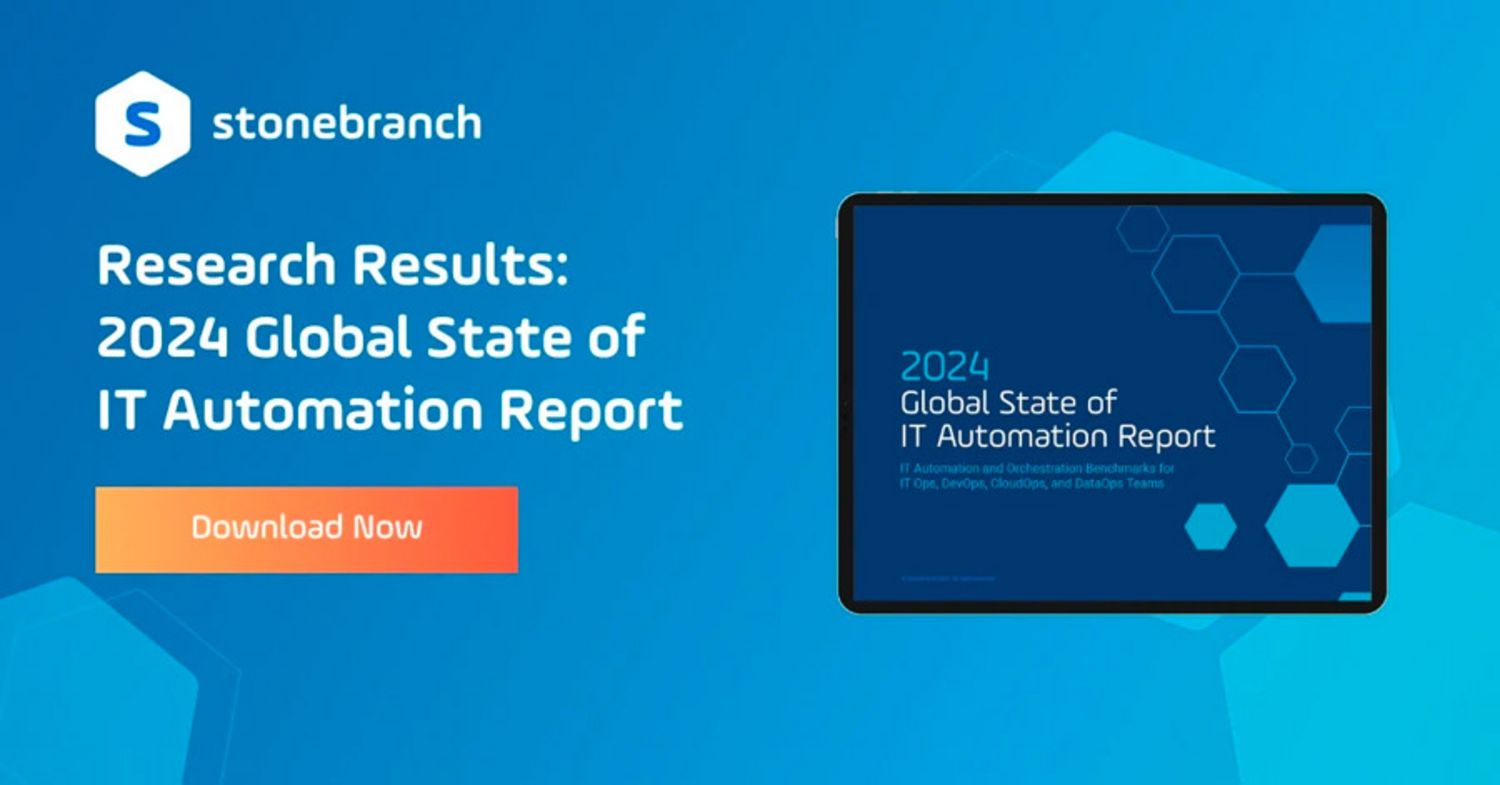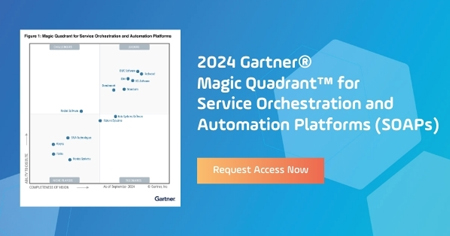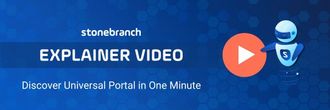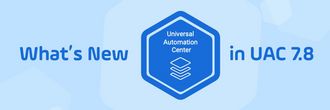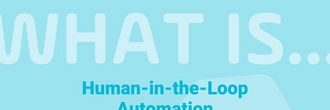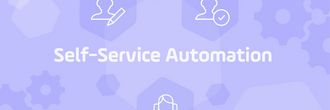DataOps: Redefining Data Management Operations
Transform your data management operations with a DataOps orchestration and automation platform.
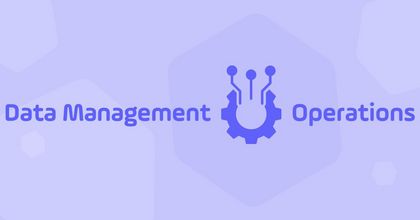
Data management operations are at a crossroads, and DataOps (data operations) practices serve as a guide to help navigate the way. According to Gartner's recent report, Develop 3 Essential Practices for Data Management Operations, data and analytics (D&A) leaders must redefine their approach to avoid constant firefighting and staff burnout. According to the report, this redefinition hinges on adopting DataOps, platform engineering, and FinOps practices.
This article deep-dives into the practice of DataOps and how it can help transform data management into a streamlined, efficient process.
Key Challenges in Current Data Management Operations
Gartner's report highlights several data management challenges faced by D&A leaders:
- Frequent incident firefighting: constantly reacting to breaking data management systems and service-level agreement (SLA) breaches.
- Staff burnout: overwhelmed by the volume and complexity of data management tasks.
- Resistance to innovation: difficulty in adopting new data management best practices due to the existing stressed infrastructure.
These issues stem from outdated, centralized data management strategies, which are ill-equipped to handle modern demands. The solution lies in distributing operations, enhancing observability, and integrating accountability, flexibility, and automation into the core practices.
DataOps: Streamlining Data Delivery
According to Gartner's Develop 3 Essential Practices for Data Management Operations,"By 2026, a data engineering team guided by DataOps practices and tools will be 10 times more productive than teams that do not use DataOps."
DataOps practices emphasize agile, effective data delivery with upfront business engagement and rapid prototyping.
- Automate data pipelines: ensure continuous delivery and integration of different types of data, reducing manual intervention and errors.
- Establish a development lifecycle: apply DevOps-like principles to the creation of data pipelines, inclusive of dev-test-prod promotion methodologies.
- Enhance observability: monitor the volume of data processing and pinpoint issues in real-time, enabling proactive resolution.
- Prioritize business value: align data projects with business outcomes, ensuring efforts are directed toward impactful initiatives.
Deep Dive: DataOps
Gartner’s analysis reveals that traditional data analytics delivery models are often inefficient and resource-intensive. Many organizations still rely on manual processes and ad-hoc tools for data pipeline management, leading to high overhead and minimal business impact. The primary challenge is to transform these outdated methods into agile, value-driven processes that break down data silos and better align with business needs.
DataOps, as defined by Gartner, involves the application of agile and lean principles to the data management process, focusing on rapid prototyping and value-first delivery. This methodology reduces waste and ensures that data assets and efforts are closely aligned with business objectives. By incorporating continuous feedback loops and iterative development, DataOps practices help in identifying and resolving issues early in the development cycle, thus improving overall efficiency and effectiveness. Below is a Gartner client scenario with representative vendor product names demonstrating how data tools work together.
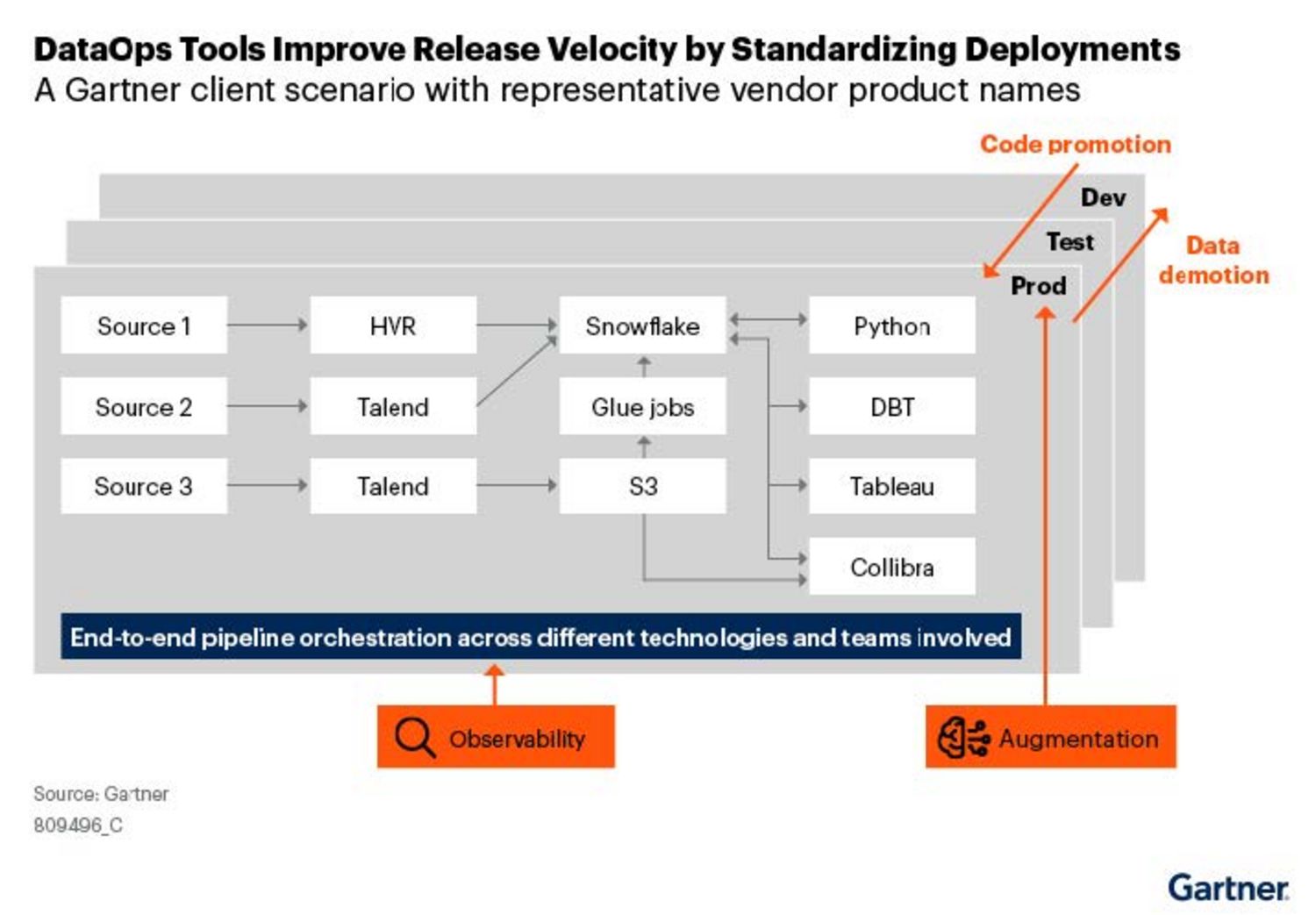
The Role of a DataOps Orchestration and Automation Solution in Redefining Data Management
DataOps — an essential practice for modern data management — is transforming how organizations handle data delivery. According to Gartner’s recent report, DataOps is crucial to streamline data processing and delivery, while enhancing data engineering efforts. A DataOps orchestration solution like Stonebranch Universal Automation Center (UAC) can be a game-changing data management platform to support your DataOps practices. Here’s how:
- End-to-end pipeline orchestration: DataOps orchestration solutions provide comprehensive tools to move data through the entire pipeline development lifecycle, from dev to test to prod. This includes managing interconnected aspects such as observability, testing, versioning, and approvals. Automating these processes reduces the manual effort required in data preparation and minimizes the risk of errors.
- Data pipeline orchestration: manage automation across each stage of a data pipeline, including each tool you use within the data pipeline. Simply put, a DataOps orchestration solution will integrate with each specialized platform you use in your data journey. This data integration includes your data source systems, ETL, data warehouse, data lake, MLOps tools, predictive analytics tools, and finally, your delivery tools like dashboards or visual analytics.
- Observability and monitoring: with integrated observability features, a DataOps orchestration tool ensures that data pipelines are monitored continuously. At the same time, you gain observability across your entire hybrid IT landscape. This capability allows teams to proactively identify and address issues, improving root cause analysis and predictive maintenance. What you cannot see, you cannot fix — observability is key to operational excellence.
- Standardized deployments: by automating key steps of the data transformation process, a DataOps orchestration solution standardizes all aspects of data deployment across development, testing, and production environments. This standardization leads to quality data, faster release cycles, and more reliable deployments.
- Scalability and flexibility: Stonebranch UAC enables you to scale the benefits of data operations across the enterprise. With effective data management — not to mention data governance — centralized on a single data management software solution, organizations can achieve a balance between consistency and local adaptability. This hub-and-spoke model empowers individual business units to innovate while adhering to centralized best practices.
- Automation and efficiency: automation is at the heart of DataOps and data management operations. By automating repetitive tasks and enabling self-service capabilities for data consumers, a DataOps orchestrator frees up valuable time for data scientists to focus on high-value activities. This shift not only ensures data quality, it also enhances productivity and reduces the overall cost of operations.
Additionally, integrating DataOps, platform engineering, and FinOps processes with an orchestration solution like Stonebranch UAC provides a holistic master data management solution that addresses the core challenges outlined by Gartner.
- Increased productivity: automation of routine tasks allows teams to focus on high-value activities, enhancing overall productivity.
- Improved reliability: real-time monitoring and standardized processes reduce the likelihood of incidents, ensuring smoother operations.
- Cost efficiency: optimized use of cloud data management resources translates to significant cost savings, making operations financially sustainable.
Conclusion
As D&A leaders seek to redefine their data management operations, adopting an orchestration solution like Stonebranch UAC is crucial. Through orchestration, UAC integrates the data management capabilities of DataOps, platform engineering, and FinOps to provide a scalable, efficient, and cost-effective framework.
By streamlining data delivery, enhancing observability, and automating key processes, Stonebranch UAC helps organizations overcome traditional inefficiencies and drive significant business value. With UAC, you’re not just managing real-time data — you’re orchestrating success.
Start Your Automation Initiative Now
Schedule a Live Demo with a Stonebranch Solution Expert

